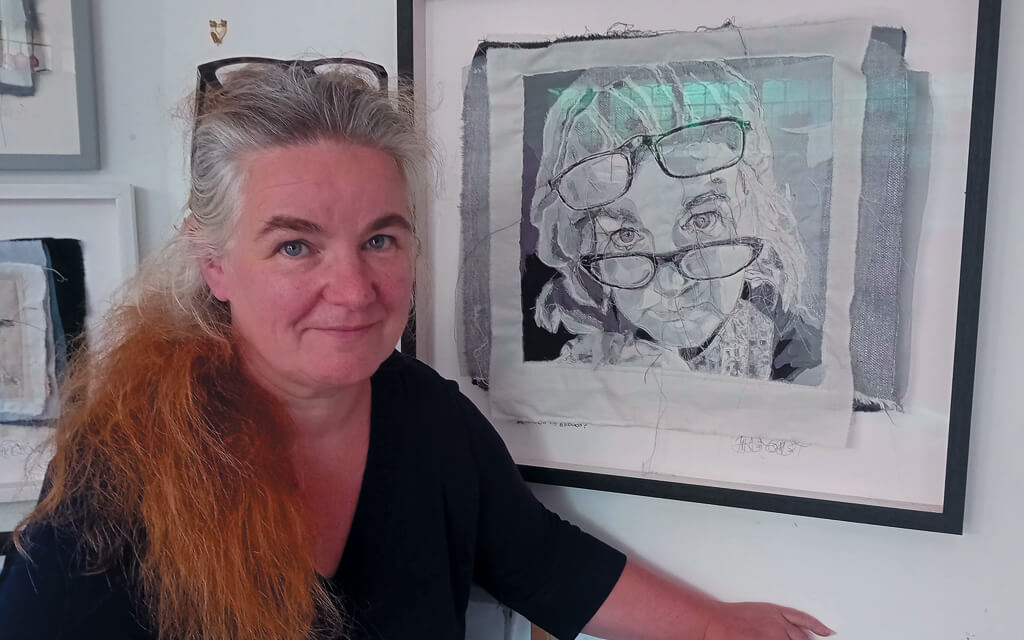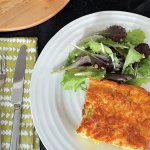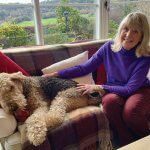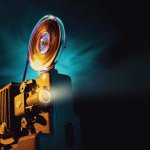While waiting at the traffic lights at Horwich End in the High Peak, observant drivers may have noticed a shop front filled with portraits of the rich and famous as well as those from everyday life. This is the home and studio of Tracey Coverley, whose remarkable stitched artworks are attracting attention from buyers far and wide, writes Steve Brown.

THE path to her present life has been full of twists and turns, career changes, fortunate coincidences and meetings with household names in the world of entertainment. They say that every picture tells a story: never was that more true here!
Tracey and her twin sister Theresa were born in the Outer Hebrides into a military family with a father in the Royal Signals. After a nomadic early childhood, Tracey`s family eventually settled in Newton-le-Willows where she spent most of her school life. This was the Thatcher era when the prospects for many school leavers were limited and defined as YTS schemes but for the young Tracey, who loved her art and had made her own clothes out of any cloth she could cut up the goal was to go to art school in St Helens on a two-year foundation course, as suggested by her school careers advisor who recognised her talent.
Tracey’s mother and father originally hailed from the High Peak and it was at this time that they decided to return to the area but she decided to remain behind in St Helens, a brave 16-year-old living in the YWCA but doing the things she loved on her course.
“I was like a sponge,” she says, “we did everything, paintings, sculptures, I loved the lot.”
“I was like a sponge,” she says, “we did everything, paintings, sculptures, I loved the lot.” She was accepted onto a Fine Arts degree at Loughborough University. She liked the fact that this course didn’t pin her down to one discipline, there was room to grow there… where stitching could eventually become a painting.
After three years at Loughborough, she graduated in 1991 but her personal preference was to leave the academic life there and to deal with her debts by getting a job; art would have to take a back seat for a while, confined to the evenings and leisure times. During the next year or so, she was “on the dole” as well as time spent with the National Trust in Edale working on drystone walls until British Rail (as it then was) came along looking to recruit signallers in the locality. After training at signalling school in Manchester, she became a signaller at the busy Chinley signal box, working for the next thirteen years.
However, art still had a place even there as, during periods of inactivity on shifts, she made dresses and other clothes for colleagues, friends and customers and her extra mural efforts even extended to making a five-foot tall giraffe out of papier mache! She then moved into signalling standards and safety briefings for her signalling colleagues in the North West, which at least put an end to the shift working but did see her spending more time travelling, particularly when Network Rail began to centralise and support many functions such as hers in a central HQ at Milton Keynes.
Faced with this and being more disillusioned with the way she felt her role was headed she, in her own words, “walked away with no plan and no severance payment.” Tracey had to quickly find another source of income and turned to her love of stitching and making things for others even though “she could have worked in a supermarket.” She started sewing and making doll sets of well-known music groups and the image of one of these, of her idol, Paul Weller, and his group The Jam, went viral on social media.
Paul’s driver spotted these, bought some of her work and as a result, Tracey was invited down south to meet Paul himself! He recommended Tracey and her work to his friends and even commissioned her to produce a doll of David Bowie for his wife! However the dolls couldn’t last forever, particularly as they took so long to make, so she continued with her stitching and sewing with a diversification into cushions and portraits made from layers of cloth. The cushions required a lot of careful stitching as they needed to be robust so, again, this was time-consuming and it was her sister who suggested that perhaps she should consider putting her stitched portraits in a picture frame as these would be protected behind glass and not need as much tidying up. This idea proved to be a winner, all starting with a portrait of the famous comedic actor Peter Sellers, and now these portraits cover the walls of her studio and the galleries where she exhibits and sells her works.
Much of Tracey’s work is in her preferred monochrome colours although she has used colour selectively elsewhere, depending on the picture and the subject. She starts a work using layers of cloth and creates her subject through cutting away fabric and creating lines and textures through this technique. Her materials can be any sort of cloths, such as recycled, and she is especially fond of nets through which many different layers can be used. “I don’t worry too much about tone,” she says “as I can just stitch over it if necessary!”
Having created her portrait through cutting and shaping the layers she can commence the stitching using just needles and threads, her trusty sewing machine and a pair of scissors! She likes to complete her portraits one at a time and will try and work through to completion with as few breaks as possible.
For Tracey, the eyes and other special features of the individual/s are key in her portraits; from these many individuals can be instantly recognised despite the unusual medium of stitching and fabrics. “I want people to see my portraits and go wow!” she says: many have undoubtedly done that!
Her portrait of Vivienne Westwood, the famous fashion designer, has been a best seller and the distinctive facial features of Hollywood legend Bette Davis, cigarette in mouth, has been used on the poster advertising Tracey’s most recent exhibition. However she confesses that men, especially older guys, are easier for her to portray than women; “their facial features, wrinkles, etc, give you as an artist more to hang on to!” If you want a great example then see her portrait of some of the iconic Rolling Stones and you will see what I mean!
Lately Tracey has taken to doing her own printing and framing so she can produce more of her works for sale in-house. Although she has been continuing with portrait commissions, her latest venture is a joint exhibition with friend and fellow artist Jill Kerr called “Birds of a Feather”, using birds as subjects where Tracey herself has experimented with using more colours and textures.
Editor’s Note: Tracey’s online sales are through handmadeinhorwichend.com and she exhibits and has works for sale in the Gallery in the Gardens in the Buxton Gardens Pavilion and at The Artful Pigeon Gallery in Glossop; or you can pay her a visit near to those traffic lights at Horwich End.






